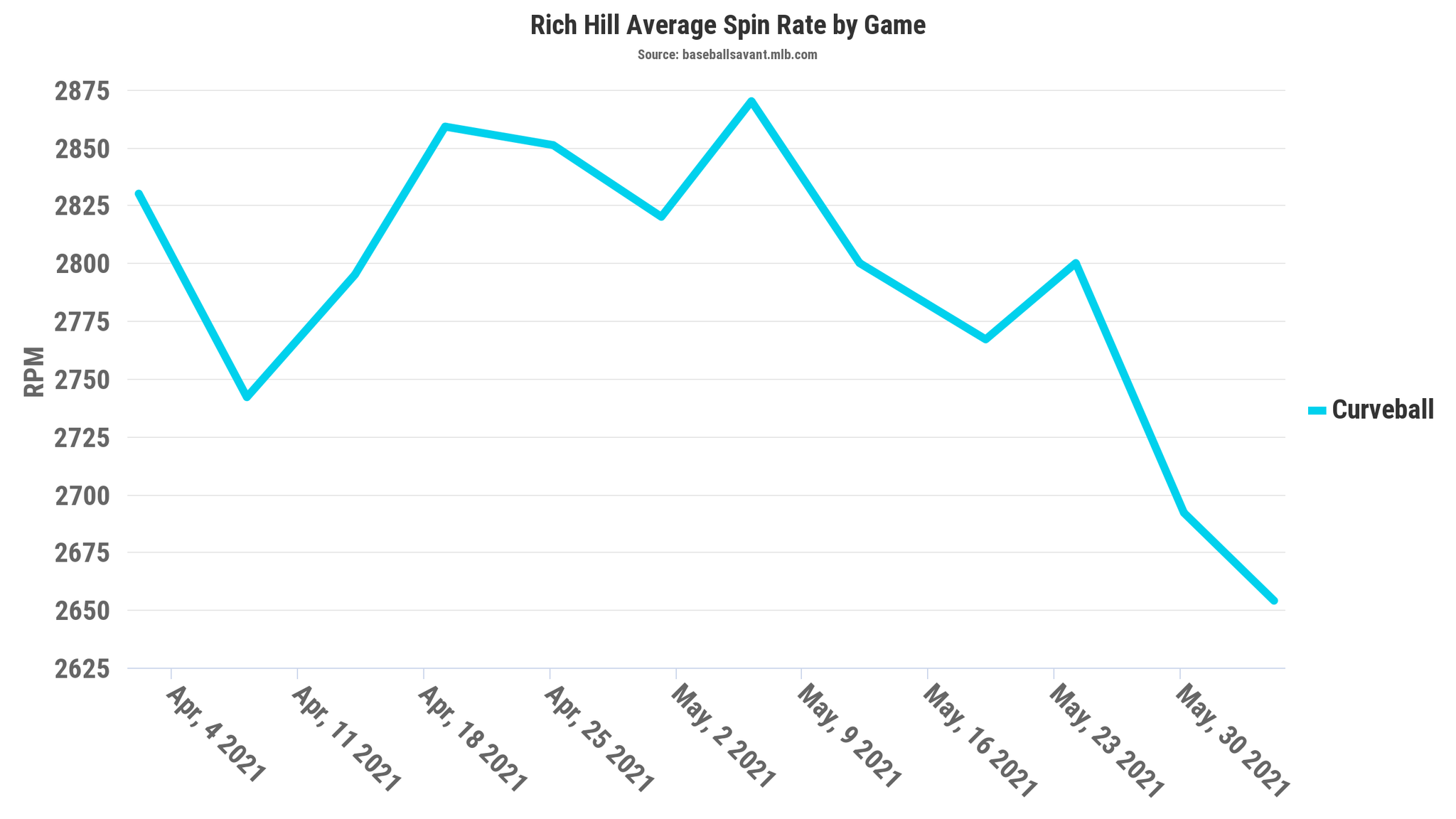How Rich Hill has continued to excel at age 41
The Tampa Bay Rays currently own the best record in baseball, thanks to a 27-10 record since the start of May. As was the case last year en route to winning the American League pennant, their starting pitching has been an integral part of their recent success. Over the last 30 days, the Rays rotation ranks second in MLB with a 2.98 ERA.
As expected, Tyler Glasnow has led the way as one of the most dominant starters in the game this year. Ryan Yarbrough has continued to be effective after a solid 2020, and the emergence of Josh Fleming and Shane McClanahan have reinforced what was already a terrific staff. However, little has contributed to the Rays’ success on the mound over the last month more than the resurgence of 41-year-old lefty Rich Hill.
Hill, who signed a one-year, $2.5 million deal with Tampa Bay in the offseason, has been one of the best pitchers in baseball over the last month. The southpaw surrendered 16 earned runs combined in his first four starts this season, but in his last seven outings, he’s allowed just five earned runs total.
What’s fascinating about Hill is that he’s basically a two-pitch pitcher. His four-seam fastball and curveball combine for 85.8% of the total pitches he has thrown in 2021. He also averages just 88.7 mph on his four-seamer, which ranks in only the fifth percentile of the league.
Despite all of that, Hill rates 14.7% above league average in Stuff+, a metric that helps define a pitcher’s overall quality of pitches based on factors such as velocity, movement, spin, etc. Among major leaguers who have thrown at least 600 pitches this season, Hill’s Stuff+ rating ranks 11th this season.
Stuff+ Leaders (minimum 600 pitches)
- Gerrit Cole (NYY) – 136.4
- Jacob DeGrom (NYM) – 131.2
- Corbin Burnes (MIL) – 130.6
- Trevor Bauer (LAD) – 128.9
- Yu Darvish (SD) – 128.4
- Tyler Glasnow (TB) – 126.8
- Charlie Morton (ATL) – 122.4
- Clayton Kershaw (LAD) – 121.4
- Julio Urías (LAD) – 120.1
- Shohei Ohtani (LAA) – 115.5
- Rich Hill (TB) – 114.7
- Kenta Maeda (MIN) – 114.5
- Walker Buehler (LAD) – 114.4
- Dylan Cease (CHW) – 114.2
- Freddy Peralta (MIL) – 113.7
What Hill lacks in velocity on four-seam fastball, he makes up for with movement. Hill’s fastball has 2.3 more inches of vertical movement compared to the average four-seamer, which is the 26th highest number in baseball this year.
The rise he creates with his fastball allows him to generate plenty of swings and misses on the pitch even though it lacks velocity. In 2021, Hill’s four-seamer (minimum 100 plate appearances) ranks 12th in whiff rate, ninth in strikeout rate and third in put away rate, among 56 qualifying pitchers.
Hill’s curveball has been an excellent pitch as well this season. That pitch is not inducing the same number of whiffs as his fastball, but opposing batters are hitting that pitch on the ground at a 60% clip.
The unique thing about Hill’s curveball is that it gets 6.9 more inches of horizontal break than the average curveball. Only four major league pitchers have produced greater horizontal movement on their curveballs this season.
Curveball Horizontal Movement Leaders
- Tejay Antone (CIN) – 8.5 inches
- Julio Urías (LAD) – 7.6 inches
- Brooks Raley (HOU) – 7.6 inches
- Justin Dunn (SEA) – 7.0 inches
- Rich Hill (TB) – 6.9 inches
Hill’s curveball is 14th among all pitchers in active spin, which measures the amount of spin on a pitch that contributes to its movement. In 2019, Hill ranked first in this category and 23rd in last year’s abbreviated season, so the decline over the past year-plus suggests he’s been subject to the whims of aging. However, he is still optimizing his curveball spin at an elite level.
Opposing batters are hitting just .177 with a .240 slugging percentage against Hill’s curveball in 2021. His opponent xBA (.257) and xSLG (.383) percentage against that pitch suggest he’s been a bit lucky and due for some regression, but the high rate of ground balls he’s producing will help his curveball remain an effective pitch going forward.
Another thing to track as he progresses through the season is how his curveball spin rate holds up. After peaking at an average of 2870 rpm on May 7, the pitch's spin has decreased considerably. His last two starts have set season-lows in this category.

This decline could just be a consequence of being 41 years old. Hill is at the point of his career where he won’t be able to pitch every fourth or fifth day over the course of a full 162-game season. Luckily, he won’t have to with the depth the Rays have on their pitching staff.
It might be hard to believe how dominant Hill has been recently with only two reliable pitches and well below-average velocity, but he has posted the second-lowest ERA in the league since April 26. If he can stay healthy and the Rays can keep him fresh throughout the rest of the season, he’ll continue to be one of the most valuable arms for one of the best pitching staffs in baseball.
